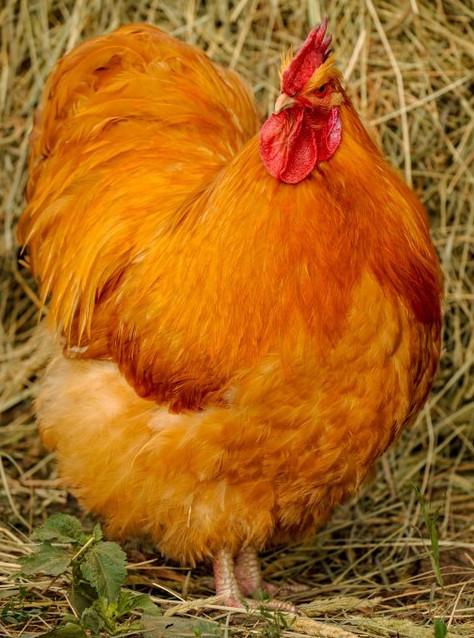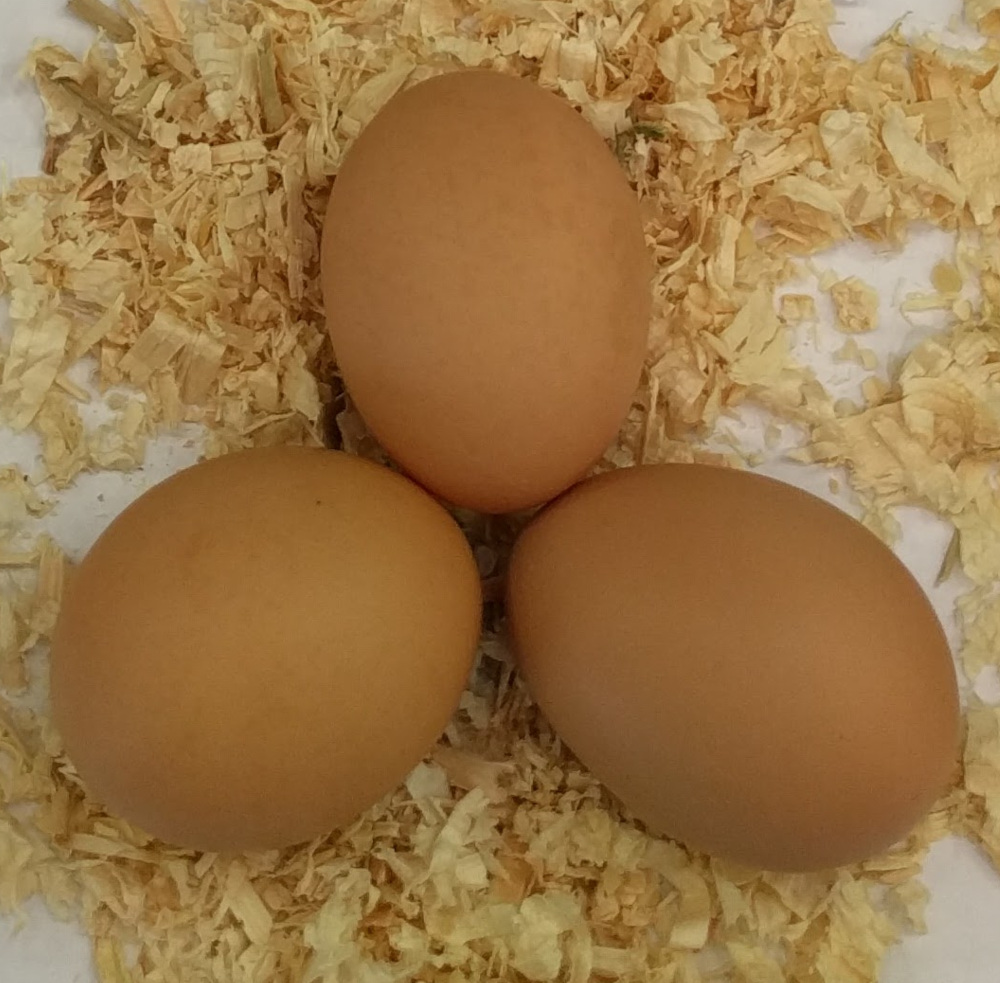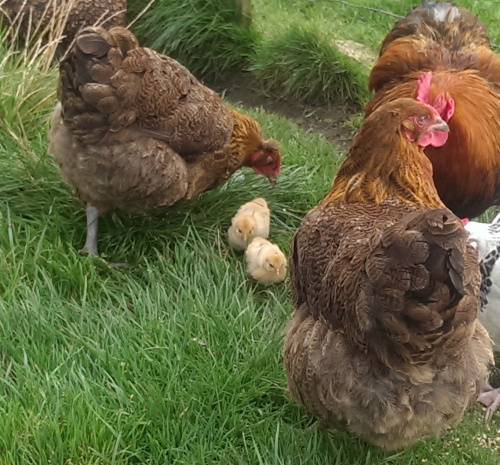Orpington characteristics

I have kept and bred several types and colours of Orpington chickens over the years and they all seem to share the same character traits. I always found my Orpintons to be nice birds to be around.
Are Orpington chickens right for you:
Even Orpington roosters are quiet and friendly birds. I once sold one to a young lady who had just ditched her boyfriend and wanted the company of a pet rooster about the house. She was delighted, mentioning the bird made less mess, was quieter and less smelly than her EX.
Orpingtons are not good flyers, their size, weight and shape means they prefer to stay firmly on the ground. Mine always managed to get up to the perches and this was about their limit.
Below: The Buff Orpington is the most common.

All my colours of Orpington have preferred to roost, but not too high as they do like to fly much and being large birds, could get injured in a heavy landing from a high perch.
All Orpington chickens are in the large fowl soft feather class unless they are bantams, then they are bantam soft feather.
My Orpingtons have never been quite as long lived as some of my breeds of chickens living only an average of 7 to 8 years. I have theorised over the years that really large chickens have a shorter lifespan.
Orpington hens will begin laying at the age of about five months to six months and they are good layers, especially in winter, and the eggs are medium in size and in tint.
Below: Eggs from my blue Orpingtons.

Mine are wonderful layers of quality, large, smooth, brown eggs.
Pullets hatched in April and May commence laying in early winter, when eggs are most desired, and will keep up laying until spring, if warmly housed and fed well with added greens.
My Orpington chickens have always been good foragers and have preferred to be free range and the love to be on fresh pasture.
They make nice quiet sitters, easy to handle and make good mothers.
My Orpington chicks have always been hardy and easy to raise. They feather out rather slowly but that is to their advantage.
A chick that feathers out too fast uses the most of its energy to make feathers instead of bodily growth, consequently they become susceptible to the many chick illnesses and easily succumb or fail to thrive.
Below: The chicks are well suited to outdoor rearing with broody hens.

The adults are a good winter hardy bird with small comb and thick feathering to keep them warm in the coldest of weathers. I have found the Orpingtons of a very hardy constitution, and one of the most active of the large breeds.
The Orpingtons are a cold weather bird and as a rule do not do well in hot climates. If you regularly have long hot, sunny days where you live you might want to consider the Mediterranean breeds.
They are far from being non-sitters, but easily broken if taken in season, gentle when sitting and the best of mothers.
Downsides of Orpington chickens:
- Can suffer fertility problems because of feathers covering the vent.
- Large heavy birds can be difficult to handle.
- Not good in hot weather.
- Need a lot more space than some breeds.
- Being a heavy bird they sometimes kill chicks by standing on them.
- As a meat bird it is somewhat heavy in bone with a large and weighty carcass.
Orpingtons are easily bred. They generally breed truer to colour and type than any other variety, and are especially good for the beginner.
The cockerels weigh ten to twelve pounds and the hens from eight to ten pounds.
If you want to keep Orpingtons as a meat bird, they are especially noted for their deep bodies and broad, full breasts, the long breast bone carrying almost as much white meat as is found upon a small turkey. The skin is white, thin and tender and processing is easy.
